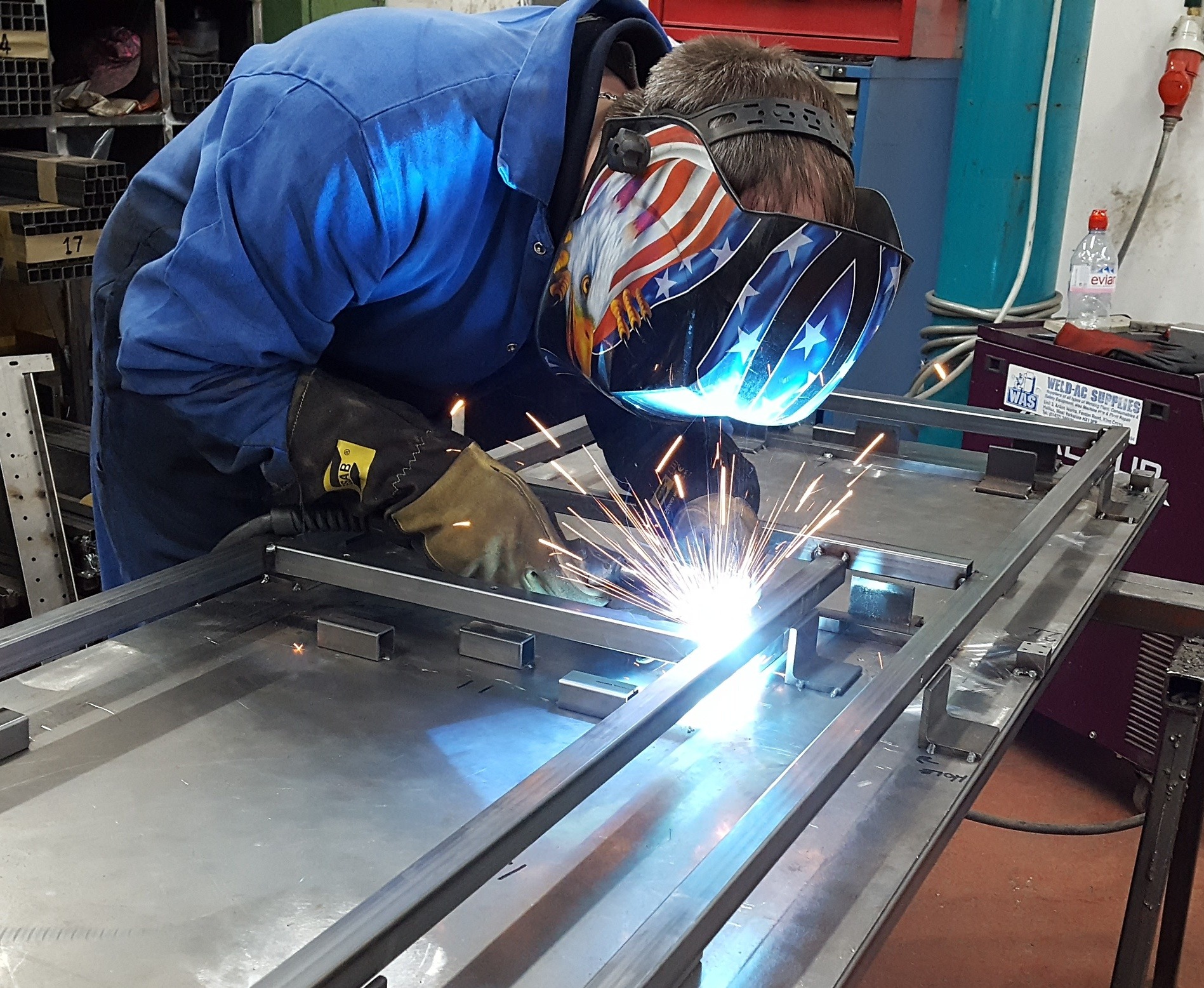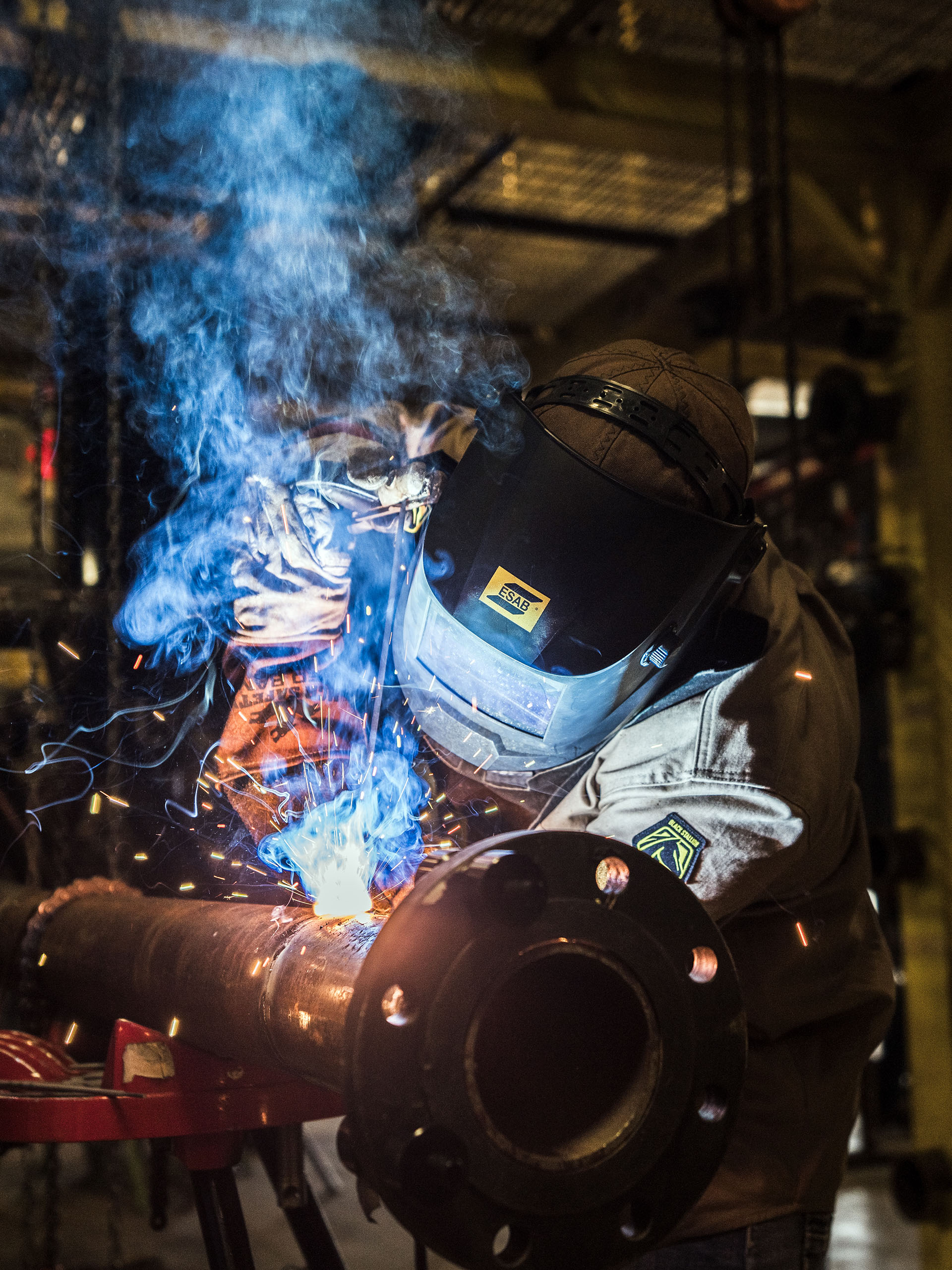Common Welding Repair Work Issues and How to Address Them Successfully
Welding repair work often come across a variety of issues that can threaten the stability of the end product. Typical issues include insufficient penetration, porosity, and misalignment, amongst others. Each issue offers one-of-a-kind challenges that call for details techniques for resolution. Comprehending these problems is crucial for welders intending to boost their end results and skills. This discussion will certainly discover these usual welding fixing concerns and efficient techniques to resolve them.
Insufficient Penetration
Poor infiltration happens when the weld metal falls short to completely fuse with the base material, resulting in weak joints and potential architectural failings. This issue frequently originates from inadequate warm input, wrong electrode angle, or improper welding speed. Welders might experience insufficient penetration due to a mistake of the essential specifications for a certain material density or type. Furthermore, contamination on the base product's surface area can prevent reliable bonding, aggravating the problem. To resolve insufficient penetration, welders must ensure appropriate setups on their devices and maintain a tidy job surface. Normal evaluation of welds is advised to determine any deficiencies early, permitting prompt adjustments and the avoidance of compromised architectural integrity in bonded assemblies.
Porosity
Porosity is a common issue in bonded joints that materializes as tiny gas bubbles trapped within the weld metal. This issue can jeopardize the honesty of the weld, causing reduced stamina and potential failure under stress and anxiety. Montana Mobile Welding and Repair Belgrade Welding. Porosity typically occurs from contamination, moisture, or incorrect welding strategies, which enable gases to get away into the liquified weld pool. To deal with porosity, welders ought to assure appropriate surface preparation, keep a tidy functioning environment, and use appropriate welding parameters. Additionally, picking the right filler product and shielding gas can alleviate gas entrapment. Regular assessment and testing of welds can help recognize porosity early, guaranteeing timely restorative actions are taken, thereby maintaining the quality and integrity of the welded framework
Imbalance
Misalignment in welding can emerge from various variables, consisting of incorrect arrangement and thermal development. Comprehending the source is essential for efficient resolution. A number of improvement techniques are readily available to straighten parts and ensure architectural stability.
Root causes of Imbalance
Welding misalignment frequently comes from a selection of underlying issues that can jeopardize structural integrity. One main cause is inappropriate fit-up of components before welding, which can result in voids and uneven surface areas. Variations in thermal expansion throughout the welding process can additionally lead to distortion, especially if the products being signed up with have different coefficients of development. In addition, inadequate fixturing and clamping might fail to hold parts securely in position, leading to movement during welding. Poorly maintained devices, including welding makers and tools, might introduce incongruities in the weld grain, additional adding to imbalance. Operator error, stemming from not enough training or experience, can also play a substantial role in producing misaligned welds.

Modification Techniques Available
Attending to misalignment efficiently calls for a mix of rehabilitative strategies customized to the specific concerns available. One usual method is using fixtures or jigs to hold parts in the proper placement during welding, making certain regular placement. Additionally, preheating the products can help in reducing distortion and improve fit-up. For substantial imbalance, mechanical adjustment strategies, such as using hydraulic jacks or clamps, can be used to remedy the setting prior to welding. Post-weld warmth therapy may also be needed to ease stresses created by imbalance. Mindful examination and change during the configuration phase can stop imbalance concerns from ending up being significant troubles, advertising a smoother welding process and boosting general architectural stability.
Distortion
Distortion is a typical difficulty in welding that can emerge from different elements, consisting of unequal cooling and heating. Comprehending the reasons for distortion is important for applying reliable prevention methods. Resolving this issue not only improves architectural integrity however also improves the overall high quality of the weld.
Reasons for Distortion
When based on the extreme warm of welding, materials typically undertake adjustments that can result in distortion. This phenomenon largely develops from thermal growth and contraction during the welding procedure. As the weld location warms up, the material increases; upon air conditioning, it acquires, which can create internal tensions. Furthermore, uneven home heating across a workpiece can worsen these anxieties, causing warping or bending. The kind of material also plays a considerable role; steels with varying thermal conductivity and coefficients of expansion may respond differently, causing uncertain distortions. Additionally, bad joint layout and inadequate fixturing can add to misalignment throughout welding, boosting the possibility of distortion. Comprehending these reasons is crucial for reliable welding repair service and prevention methods.
Prevention Techniques
Efficient avoidance methods for distortion during welding concentrate on managing heat input and guaranteeing correct joint layout. Maintaining a constant heat input helps to reduce thermal development and contraction, which can cause distortion. Making use of techniques such as pre-heating the workpiece can also minimize the temperature gradient, promoting uniform home heating. In addition, selecting proper joint layouts, such as T-joints or lap joints, can boost security and minimize anxiety focus. Applying appropriate fixturing to protect the workpieces in area even more help in maintaining positioning throughout the welding procedure. Ultimately, staggered welding sequences can distribute warmth much more evenly, avoiding local distortion. By applying these methods, welders can greatly decrease the possibility of distortion and enhance the general quality of their welds.
Splitting
Cracking is an usual issue encountered in welding repair work, typically arising from different factors such as improper cooling rates, material selection, or insufficient joint prep work. The occurrence of fractures can considerably endanger the integrity of the weld, resulting in possible failures during procedure. To address this concern, welders should initially analyze the source, ensuring that materials are compatible and suitably selected for the particular application. Furthermore, managing the air conditioning price during the welding procedure is necessary; quick cooling can induce stress and cause splitting. Correct joint style and prep work additionally add to decreasing the risk. Applying these methods can enhance weld top quality and resilience, ultimately lowering the likelihood of cracking in finished weldments.

Insufficient Fusion
A substantial concern in welding repairs is insufficient blend, which occurs when the weld steel does not effectively bond with the base product or previous weld passes - Montana Mobile Welding and Repair Belgrade Fabrication. This flaw can cause weak points in the joint, possibly jeopardizing the honesty of the welded structure. Variables adding to incomplete combination include insufficient warm input, inappropriate welding method, and contamination of the surfaces being signed up with. To address this concern efficiently, welders must guarantee correct pre-weld cleaning and surface preparation, in addition to change their welding parameters to attain sufficient penetration and blend. Routine examination during the welding process can likewise help determine welding chaps insufficient blend early, allowing for timely restorative Homepage steps to improve the general quality of the weld
Overheating
While welding fixings can enhance structural integrity, overheating offers a significant difficulty that can cause material degradation. Excessive warmth throughout welding can modify the mechanical residential properties of steels, leading to minimized toughness, increased brittleness, and bending. This sensation is specifically crucial in high-stress applications where architectural integrity is extremely important. Determining getting too hot can include aesthetic assessments for staining or distortion, as well as keeping an eye on temperature throughout the welding process. To minimize the risks connected with getting too hot, welders need to use appropriate techniques, such as regulating warmth input, changing travel speed, and making use of ideal filler materials. In addition, applying pre- and post-weld heat therapies can assist bring back product residential properties and improve the overall top quality of the fixing, making certain long-lasting performance and safety.
Regularly Asked Questions
What Are the Typical Signs of a Welding Issue?

Just How Can I Examine My Welds for Top quality?
To evaluate welds for high quality, one can use visual examinations, ultrasonic screening, and radiographic techniques. Each method assures architectural stability, recognizes issues, and validates adherence to defined criteria, eventually enhancing the dependability of the welded joints.
What Safety Precautions Should I Take While Welding?
When welding, one should prioritize safety and security by using ideal personal safety tools, making certain correct ventilation, securing combustible products away, preserving a tidy office, and knowing surroundings to stop crashes and injuries.
Can I Repair a Weld Without Remodeling the Entire Joint?
Fixing a weld without redesigning the entire joint is feasible, depending upon the damage (Montana Mobile Welding and Repair Welding). Techniques such as grinding, adding filler product, or utilizing a welding process can successfully resolve certain defects while preserving the bordering structure
What Devices Are Essential for Reliable Welding Fixes?
Crucial devices for effective welding fixings include a welding equipment, wire brush, grinder, safety gear, clamps, and filler materials. Each device plays an essential function in ensuring high quality and safety and security during the fixing process. Porosity usually develops from contamination, moisture, or inappropriate welding techniques, which enable gases to escape into use this link the molten weld pool. Inadequately maintained devices, consisting of welding devices and devices, may introduce inconsistencies in the weld bead, additional adding to misalignment. When subjected to the extreme heat of welding, products typically go through adjustments that can lead to distortion. Breaking is a typical concern encountered in welding repairs, commonly resulting from numerous elements such as incorrect air conditioning prices, material selection, or insufficient joint prep work. A significant issue in welding repairs is insufficient combination, which takes place when the weld steel does not effectively bond with the base product or previous weld passes.